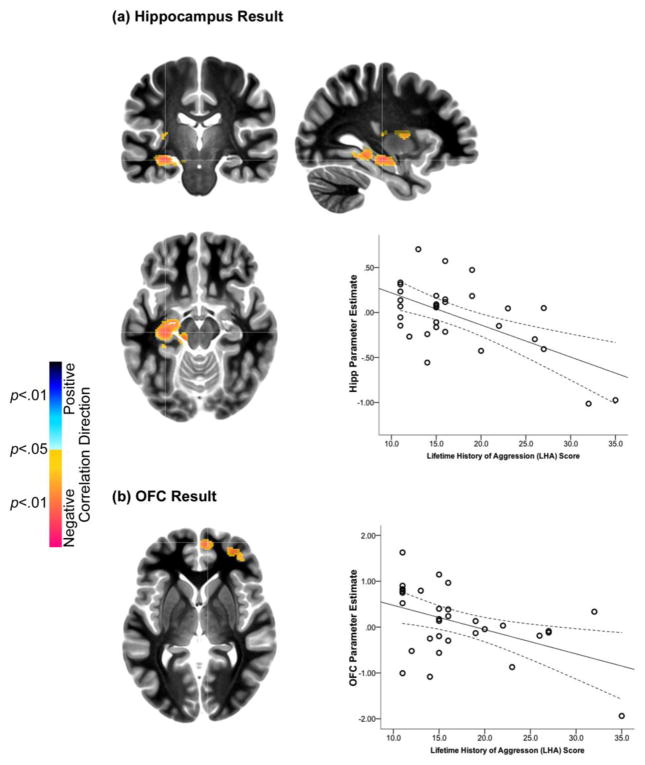Figure 2.
(a). The orthoview depicts significant clusters in the hippocampus (Hipp) showing a negative relationship between fMRI activation in BPD, and the degree of aggression measured by the Lifetime History of Aggression (LHA) scale. The fMRI response under the significant peak (cross-hairs) is depicted in the adjoining graph (95% confidence intervals are depicted around the regression function), as a function of the LHA. (b). The axial view depicts significant clusters in orbitofrontal cortex (OFC) showing a negative relationship between fMRI activation in BPD, and the degree of aggression measured by the Lifetime History of Aggression (LHA) scale. The fMRI response under the significant peak (cross-hairs) was extracted and is depicted in the adjoining graph (95% confidence intervals are depicted around the regression function), as a function of the LHA.

